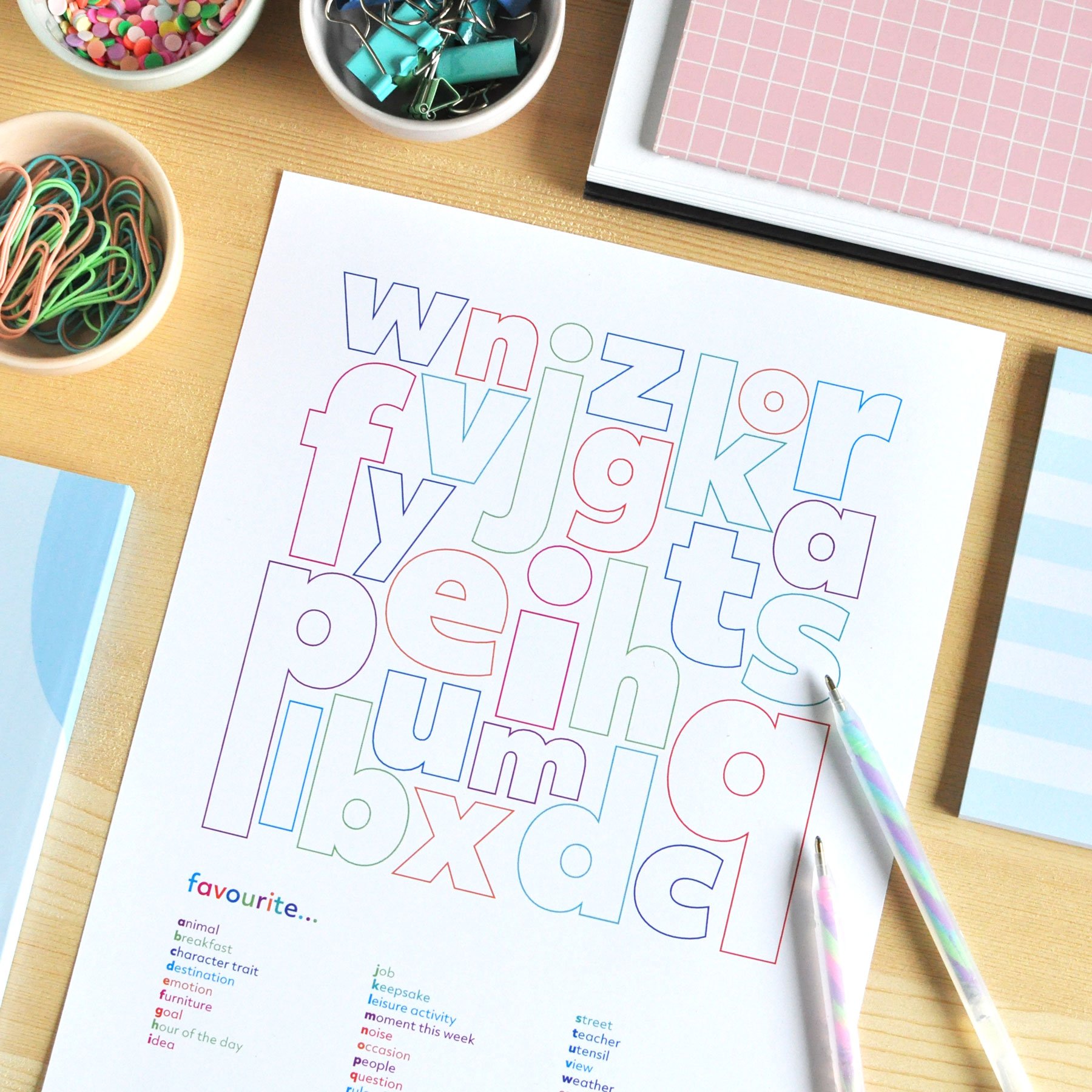A huge part of my creative process involves the pursuit of journal ideas that don't quite work. I know this part very well. Somewhere along the way from initial idea to final draft, a creeping sort of doubt sets in. I find myself staring at the page or screen thinking, hmm, this isn't how I imagined it. Maybe if I try it this way. Nope. How about this way? Also nope.
It takes a lot of nopes, but eventually, in order to move on, I have to concede that an idea isn't quite ready for sharing and might never be. My folders are overflowing with printables and posts in various stages of completion that don't quite work.
Here's an example...
My original idea was to create a variation on my alphabet-inspired pages, with colourful letters serving as writing spaces.
I can't tell you how much fun I had arranging the letters! That little m. Who says all the stems have to be the same length? It was so much fun that I also made a numbers page and a few other variations. I couldn't stop! Writing the prompts was also a treat -- some are easy-breezy and some a little more challenging.
But when the time came to journal the page, writing into those simple letter shapes kind of ruined it for me. The end result looked messy, which is usually fine by me where journaling is concerned, but not in this case. Some letters didn't offer enough space and some offered too much. I mostly sorted it out in a second attempt by writing along the inside borders of letters, but still felt the page needed to be filed away.
Until today.
Today, I thought I'd share it with you anyway.
Maybe it truly doesn't work or maybe it does after all. Or maybe it's a step along the way to a better idea. It's often hard to tell the difference and in the past I've been hesitant to write when I just don't know. But now I'm wondering if sharing what I'm up to, even when it's not quite working, might be an opportunity to chat about our creative projects, to revisit ideas we aren't ready to give up on yet and cheer each other on through the nopes.
I'll start. If you'd like to give this page a try, you can click here or on the image above to download it. I'd love to know your thoughts. Truly. And if sharing ideas that don't quite work -- yet! -- is something you'd like to see more of in future posts, just leave a comment below to let me know that too!
P.S. The pdf page file includes two page sizes: letter and A4.











